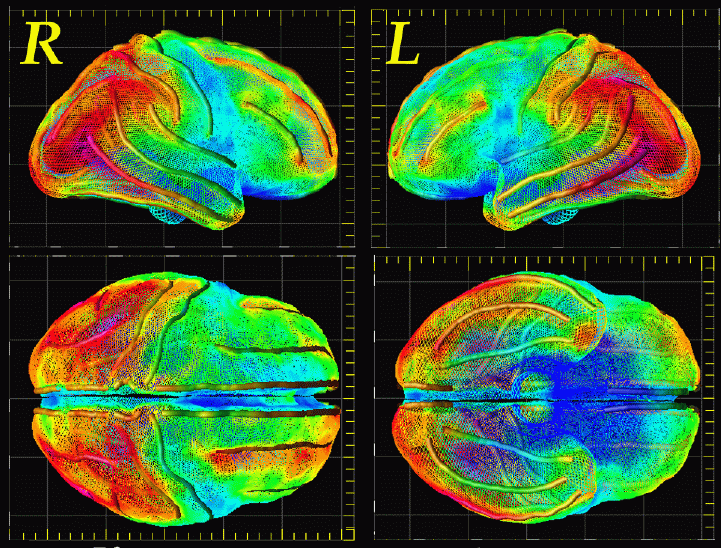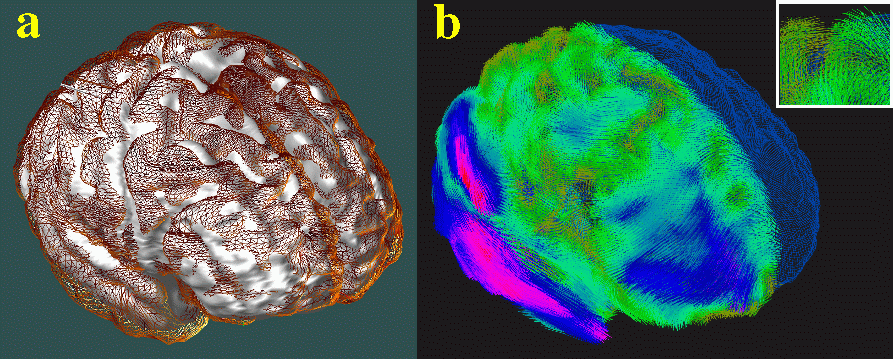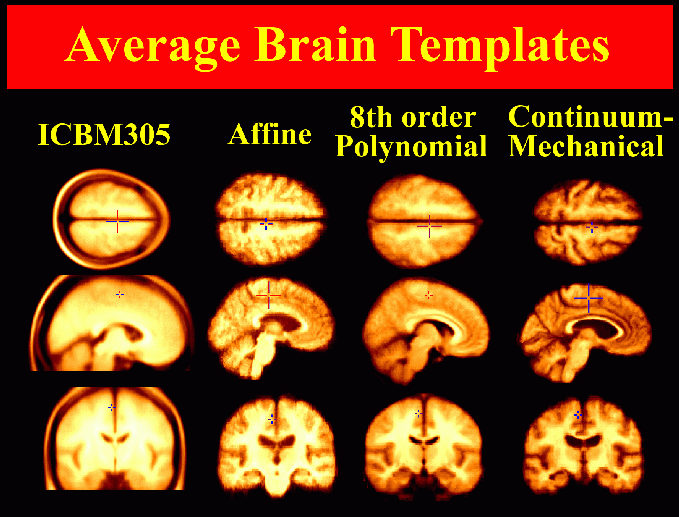
Human Brain Mapping 9(2):81-92, Feb. 2000
[Invited Paper; Presented in part as a Platform Talk, Texas BrainMap Conference, Dec. 6-7 1998]
Thompson PM, Woods RP, Mega MS, Toga AW
Laboratory of Neuro Imaging, Dept. Neurology, Division of Brain Mapping,
UCLA School of Medicine, Los Angeles CA 90095, USA,
and
UCLA Alzheimer's Disease Center
Summary. Striking variations in brain structure, especially in the gyral patterns of the human cortex, present fundamental challenges in human brain mapping. Probabilistic brain atlases, which encode information on structural and functional variability in large human populations, are powerful research tools with broad applications.
Knowledge-based imaging algorithms can also leverage atlased information on anatomic variation. Applications include automated image labeling, pathology detection in individuals or groups, and investigating how regional anatomy is altered in disease, and with age, gender, handedness and other clinical or genetic factors. In this paper, we illustrate some of the mathematical challenges involved in constructing population-based brain atlases.
A disease-specific atlas is constructed, to represent the human brain in Alzheimer's Disease (AD). Specialized strategies are developed for population-based averaging of anatomy. Sets of high-dimensional elastic mappings, based on the principles of continuum mechanics, reconfigure the anatomy of a large number of subjects in an anatomic image database. These mappings generate a local encoding of anatomic variability, and are used to create a crisp anatomical image template with highly-resolved structures in their mean spatial location. Specialized approaches are also developed to average cortical topography. Since cortical patterns are altered in a variety of diseases, gyral pattern matching is used to encode the magnitude and principal directions of local cortical variation. In the resulting cortical templates, subtle features emerge. Regional asymmetries appear that are not apparent in individual anatomies. Population-based maps of cortical variation reveal a mosaic of variability patterns that segregate sharply according to functional specialization and cytoarchitectonic boundaries.
Keywords:brain mapping, brain atlases, cerebral cortex, morphometry, Alzheimer's disease

Anatomical Variability of the Cerebral Cortex. (N=26, Alzheimer's Patients). A 3D map of variability is shown (above), on an average surface representation of the cortex derived from an Alzheimer's Disease population. Note how the structural variability of temporo-parietal and frontal association areas (red colors) is a factor of ten higher than sensorimotor cortex (blue colors). Variability is calculated based on 3D displacement maps, which locally encode the amount of deformation required to drive each subject's gyral pattern into exact correspondence with the average cortex for the group (below).


Average Brain Templates. Average brain images can be created by averaging the intensities of MRI scans from multiple subjects. Here, increasingly complex spatial mappings are applied to reconfigure each subject's anatomy into the average anatomical configuration for the Alzheimer's patient population, before the intensities of individual scans are averaged across the group. The final image template (last column), which is based on continuum-mechanical mappings with 0.1 billion degrees of freedom, contains well-resolved anatomical features and represents the average anatomy for the Alzheimer's Disease patient group.
Paul Thompson
| RESUME| E-MAIL ME| PERSONAL HOMEPAGE| PROJECTS |
|---|